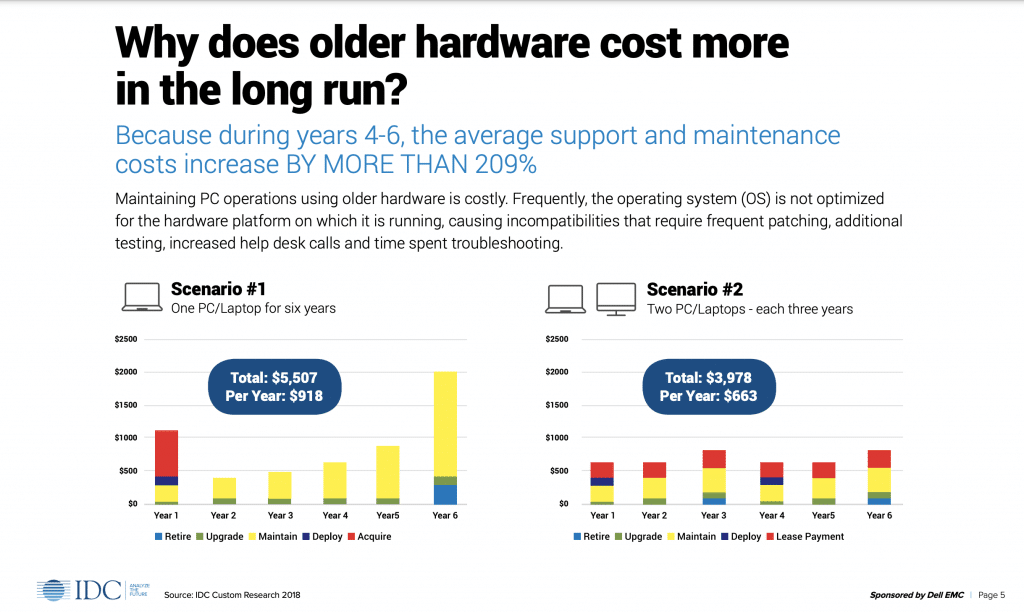Cybersecurity Liability insurance policies and compliance standards require businesses to follow best practices around asset lifecycle management. Let’s answer the 3 most pressing questions.
- What is asset lifecycle management?
- Why should small businesses care?
- What are the best practices around asset lifecycle management?

1. What is asset lifecycle management?
Asset lifecycle management is the process of tracking all technology assets in a business. This is done at every phase in an assets lifecycle from planning through procurement, utilization, maintenance and disposal.
Plan:
The first phase of an asset’s lifecycle is the planning and preparation. Digital transformation has impacted businesses in myriad ways. Technology provides power, automation and productivity. (IDC) Therefore, planning meetings or business reviews should focus on aligning technology needs and costs to business goals and outcomes. A full technology cost of ownership conversation should include planning for new assets and technologies.
Procurement:
This phase has been impacted dramatically with supply chain issues. Therefore, it is even more important that the planning phase include projections both short and long term. The procurement phase should include not just budget conversations but workflow needs and impact discussions as well. This is also when the device will need to be configured to address all security and regulatory requirements.
Patch:
This third phase is much more than patching (but who doesn’t love alliteration). This is the utilization phase where the asset is in use. Your managed service provider should ensure that routine maintenance, upgrades, and patching take place. Regulations now state the assets must be inventoried throughout the lifecycle. Technologies have different lifespans depending on their type. For example workstations and laptops have much shorter lifecycles than servers.
Pitch:
If disposing of an asset was as easy as pitching, it wouldn’t require a noted section. However, there are requirements around asset disposal as well. These requirements focus on the security of any data that might have existed on the asset as well as environmental needs. Your managed service company or IT Business consultant should discuss these requirements with you and have a proper process in place. (assetworks.com)
2. Why do small businesses care?
Small businesses that understand the importance of asset lifecycle management will benefit in many ways.
- Reduction of maintenance costs
- Improved asset performance
- Minimize cybersecurity risks and liabilities
The chart below from IDC (Sponsored by Dell EMC) highlights how the cost of assets are actually reduced with a strong asset lifecycle management practice.

3. What are the best practices around asset lifecycle management?
- Business reviews: To address increasing compliance standards, SMBs (small to medium businesses) should have their assets reviewed monthly. This is one of the many services your managed services provider/IT Business consultant should do.
- Business reviews – often referred to as Quarterly or Strategic Business Reviews (QBRs/SBRs) should include up-to-date information on warranty and end of life status of the business assets.

- Assets that are nearing expiration should be scheduled for replacement. Your IT Business Consultant should be able to deliver a technology roadmap and associated budget for 1, 3, and 5 years.
- Your business reviews should be focused on:
- Aligning your business goals with technology needs
- Provide short and long term budget forecasts
- Addressing cybersecurity risks and recommendations to mitigate
Small businesses should protect their investment in their business by protecting their technologies. In a world that has become digital, technology is the heartbeat of the business.
Ask your Managed Service Provider/IT business consultant about how they are protecting your business today with asset lifecycle management.

